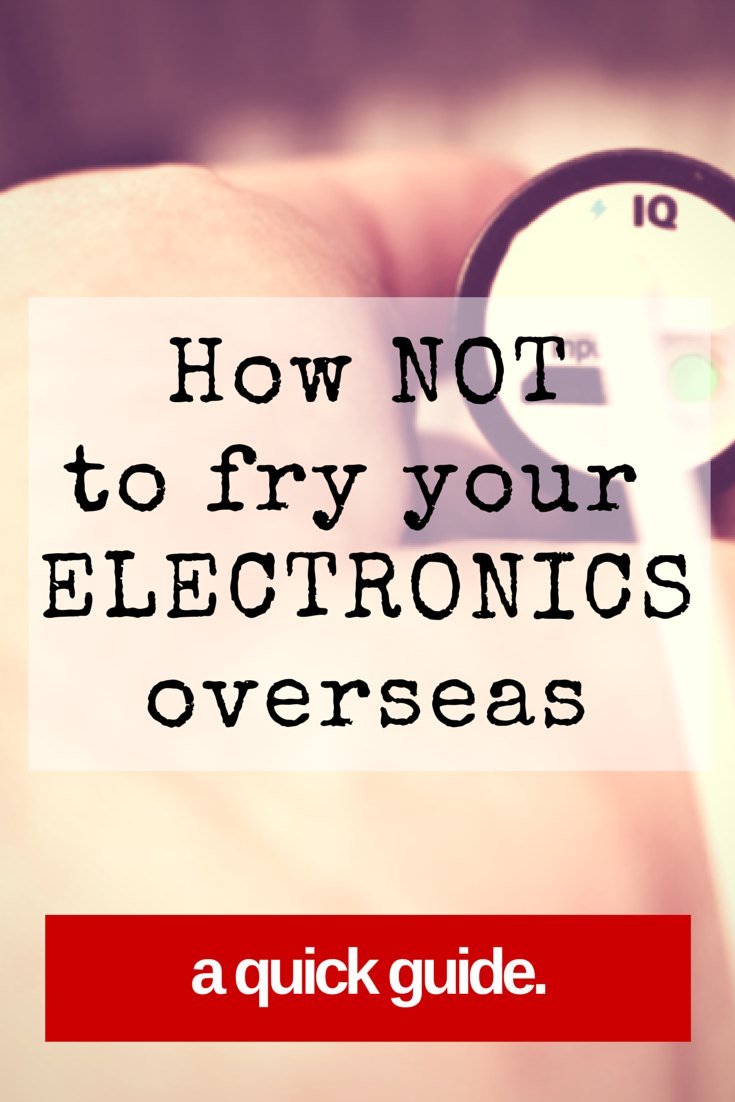
Does anyone else find travel adapters and voltage converters confusing as hell?
Even after traveling the world for the last 10 years, I still need a quick brush up on how converters and adapters work whenever we travel somewhere new.
So, I thought I’d write a short, easy guide for all of us who just want to keep from frying our electronics overseas.

So here’s the important thing to know: the difference between a converter and an adapter.
A travel adapter connects your plug end to the outlet wherever you travel. An adapter does NOT change the power output coming from the outlet.
A voltage converter adjusts the power output from the outlet and converts it to the proper voltage.
So how do you know if you need a converter or an adapter?
If the voltage your smartphone charger or laptop (or any electrical appliance) uses is the same as the voltage at your destination, all you need is an travel adapter. Even if the shape of the outlet plug is very different, your electronics will be fine as long as the voltage is the same.
Here’s an example: you plug your electronics into a Universal World Wide Travel Charger Adapter Plug, and select the prongs to fit into the outlet. Easy peasy.

If the voltage is DIFFERENT, then you’ll need a voltage converter. These can be a pain in the butt. They’re usually heavy, awkward and cost a lot more. We’ve never traveled with one, opting instead to leave any electronics that aren’t multi-voltage or the proper voltage at home. Conversely, we do travel with multiple adapters all the time since they’re typically light and small.
In layman’s terms:
If the voltage is THE SAME as your electronics, then all you need is an adapter.
If the voltage is DIFFERENT than your electronics, then you’ll need a converter.
How do you find what voltage your electronics can use?
You can usually find the voltage information on the device itself, just look for the input number. On a laptop, there’ll be a sticker on the brick of your charging cord, and it’ll be on the backside of your smartphone or tablet charger (not on the device itself).
Most devices that are dual voltage (they accept 110-120V as well as 220-240V) are automatic however some devices like hair dryers and even older laptops actually use a switch so check your device carefully the first time before plugging it in to an adapter.
And this is important: just because the plug looks the same, it doesn’t mean the voltage is the same. You can have the exact same plug in an outlet across the world, but the voltage may be different. This is where your smartphone or laptop can get very crispy, very quickly.
If you need to use a converter, make sure it has enough power to run your electronics. Most electronic devices like laptops and chargers don’t take much energy, but things like hair dryers and kettles require more watts and therefore a bigger and heavier voltage converter. A good rule of thumb is if in doubt, don’t plug it in.
If you’re looking for more information, check out The Roaming Boomers Ultimate Electricity Guide for World Travelers.
A surge protector is a good idea, too
While it isn’t necessary, it’s a great idea to have a surge protector. We’ve been carrying an awesome little Belkin 3-Outlet Mini Travel Swivel Charger Surge Protector for years now. See it on Amazon here.

It’s lightweight, and great for charging multiple devices. It’s only rated for 110-120V but we’ve actually used it without problems (mostly by accident) in European countries many times in our travels.
So far, so good. Even though I turned my phone into an iTurd in Spain, we haven’t (knock on wood) fried any electronics yet.






